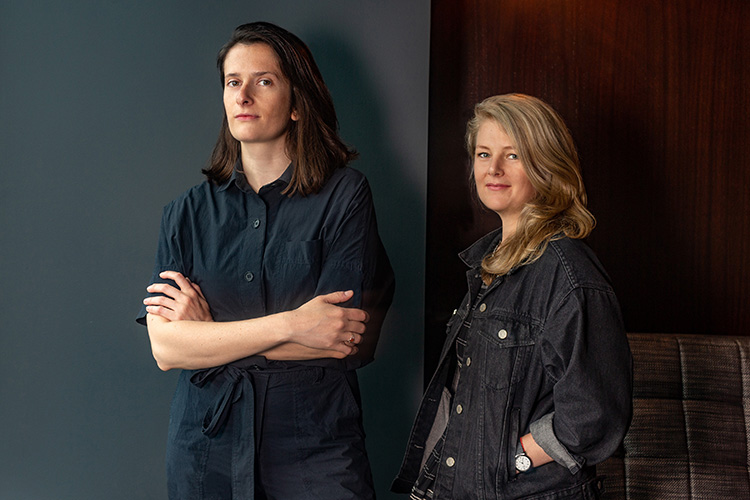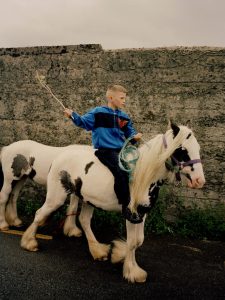
The California Sunday Magazine photography director Jacqueline Bates and Aperture associate publisher Amelia Lang recently recorded a conversation about building their careers, starting with the financial pressures and entry-level jobs that eventually led them to opportunities they never anticipated. The following is an excerpt of their full conversation, which was originally published by Rocket Science Magazine.
Amelia Lang: [W]hat has been the most precarious financial chapter of your professional life?
Jacqueline Bates: The years I was living in New York while studying at the School of Visual Arts and just starting out in magazines were the most difficult but also the most rewarding. For a few years during ungrad, when I was studying photography, I had three jobs—one was unpaid. I worked for two years at the Whitney Museum in the photo department. Another job was retouching nipples for a men’s magazine before the images went online. I babysat for the senior fashion editor at GQ every Saturday night and I did art returns for an art magazine. I always knew I wanted to work in the photography world somehow, but never as a freelance photographer. My photography was so personal—about my Italian-American family in Westchester, NY—I never thought that could translate to the editorial or commercial world. I had so many student loans and I was scared to default on them. I knew I had to get a full-time job somewhere. I looked at my friends who didn’t have those loans and they were able to take so many more chances than I ever could. I was so envious and so broke. Two weeks out of school, I got a job at Interview Magazine as their photo assistant, making less than 30K a year. It was stable. I was able to make my loan payments. I ate half a bagel for breakfast, the other half for lunch and we would always work late, even when not shipping, so I ate dinner at work a lot. Without that little perk, I wouldn’t have been able to pay rent and student loans.
…Tell me about your first years working in photo. How did you make it work?
A.L.: Similarly, I had several part-time jobs after I graduated from college. I moved back to San Francisco in 2007 from Portland, Oregon, where I studied art and U.S. history. There weren’t a lot of job opportunities in 2007-2008 (it wasn’t the best time to graduate college) and I ended up juggling several part-time projects. In doing so, however, I got to see a lot of different sides to the art world. I worked for an artist-in-residency program, managed a photographer’s studio, assisted an independent curator with a private photography collection, created a photo archive, helped to curate exhibitions, worked on arts and education initiatives, etc. It all swirled around photography—I think in part because there’s such a strong history of photography and photography community in Northern California.
J.B.: You and I did a geographical swap. You’re from Northern California, living in New York; I’m from New York, living in San Francisco. Tell me about the decision to move to New York…
A.L.: I always felt like [the Bay Area] was a special community… But eventually, it became too hard to juggle all those jobs. I also really love school, so I applied for both an internship at Aperture Foundation and a master’s degree in American Studies at Columbia University. I heard back that I was accepted at both places on the same day and I felt like it was a strong sign to make a big change. I had no money and I was twenty-five. But…I was really excited by the idea of an intense level of thinking and working. I flew across the country and into a huge snowstorm …
What did you do, work-wise, when you first landed in San Francisco?
J.B.: I moved out West to take a break from magazines but that lasted about six months. I thought I wanted to try working for a big tech company to tell stories for a global audience. And perhaps help pay off some student loans before I retire. My best friend, Carrie Levy and I art directed the rebrand campaign for Airbnb, which was a very memorable experience. To see images, shot by Emma Hardy, on billboards and buses that we had helped create and that felt a bit more artful than what you would normally expect from a tech company. We traveled around the world for six weeks, and Carrie and I still love each other to this day, ha! But as I was accepting that freelance gig out here, I met Doug McGray who was starting a new magazine [The California Sunday Magazine]. He had just asked Leo Jung to join as creative director, as the first employee. He and I met, and we chatted for a while about what the magazine might be—and he asked me to describe my photography sensibility in one word. I said: cinematic. He told me at the end of the meeting it was the same word he was using to describe what this magazine might be. I knew that I would only return to working in publishing if it was to work with kind people. Stressful work environments always stem from the top down and I feel incredibly lucky to finally work at a company that is run by a team who trusts their art department. It shouldn’t be rare in this industry, but it is.
Related articles:
Samantha Cooper and Michelle Groskopf on the Negotiating Styles of Male and Female Photographers
What I Didn’t Learn in Art School: Life Lessons from Photographers
How Several Female Photographers Got Started in Today’s Photo Market
The Cinematic Photography of The California Sunday Magazine
Who I’ve Hired: Paloma Shutes, The California Sunday Magazine






